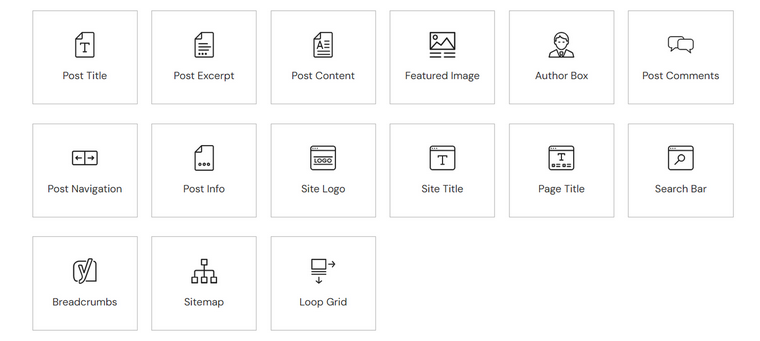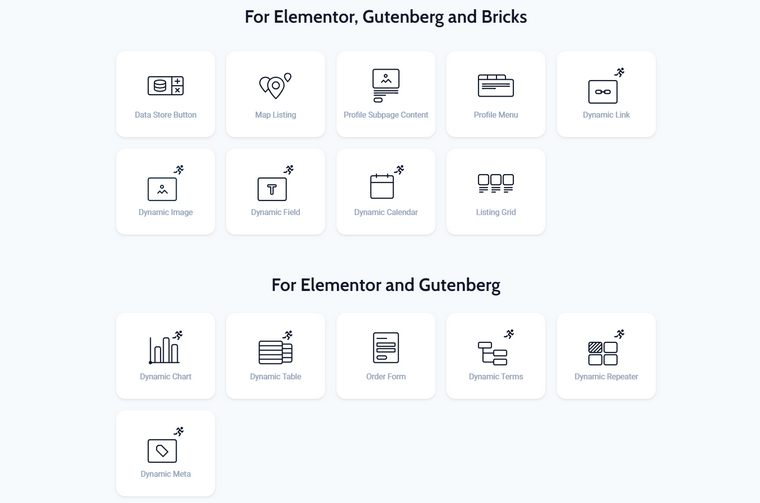It’s hard to visualize a contemporary web site without having dynamic written content, which provides static internet pages to daily life. It’s not about animations but the way the information is becoming fetched and the webpages shaped.
In this posting, we will talk about the dynamic content material, specifically in Elementor, the strategies to use it, and some interesting examples.
What Is Dynamic Content material?
Dynamic material is a piece of content material that is pulled from someplace on your site and exhibited in a particular spot of the format. In most scenarios, this kind of content material have to belong to the present-day submit/page (e.g., feature graphic or meta discipline) or be similar to it (e.g., the post’s creator).
The most uncomplicated example is when you generate a web page template in Elementor Professional Topic Builder and add “Title” and “Content” blocks to the format, so you will see titles and content blocks of web pages that use this page template appearing there.
Essentially, all the WordPress content material is dynamic since it is fetched from the database. Also, technically, you can pull just about anything you want applying some PHP code. For instance, this is how to exhibit the “Book” tailor made area:
But instances when we had to hardcode just about every website page template independently have handed more than ten yrs ago, and there are so several useful equipment to do it visually with no owning coding capabilities, and, most importantly, preserving a lot of time.
📚 Examine extra about WordPress template construction in this report.
Fetching Dynamic Written content in Elementor
Dynamic written content is offered as section of Elementor’s functionality in its Pro edition. You can use it in Topic Builder to generate templates or make internet pages with Elementor.
For templates, the web page builder presents a established of Topic Things widgets to fetch authors, submit reviews, logos, etc.

There is also a set of comparable widgets for making WooCommerce templates.
To create a template, go to Dashboard > Topic Builder, select the type of template you want to make, and click on “Add New.” There are site, put up, archives, header, and footer template varieties accessible. If WooCommerce is activated on your web site, you will see more template kinds.
Also, you can add Display Circumstances for the developed template to assign it to distinct personalized put up styles, particular posts or web pages, or those people belonging to certain categories, tags, or by specific authors.
This is how to build a simple publish template utilizing only Theme Things widgets:
On the other hand, many of these features can be replaced by other widgets in combination with dynamic tags.
Elementor dynamic tag
Dynamic tag is the characteristic for including dynamic material making use of various widgets, so not only concept aspects, these types of as Submit Title, Submit Information, etc., can pull details from selected resources. Yet another fantastic advantage of the dynamic tag element is that it’s accessible not only for templates but all webpages.
If you see a tiny database icon in the corner of the articles field in the editor, it indicates that this widget supports dynamic tags. Note that it can also be readily available in the Model tab, for instance, to fetch a container qualifications or colour dynamically.
Dynamic tags add a great deal of versatility to the design and style system, as you can populate sophisticated widgets with dynamic data, these kinds of as lists, accordions, tabs, etc.
A further hassle-free application of this attribute is styling. Generally, it is substantially much easier to incorporate an image as a track record of the container than as an Graphic widget. It presents additional manage over the sizing you can merge it with other things to create hero sections or no matter what you want.
Pulling the element’s coloration dynamically is very helpful and expands creating options. For example, you can assign a particular coloration to each class and then show them to mark the components belonging to that classification. Verify this demo to see how it operates: every home listed here belongs to the categories (Bungalow, Cottage, etc.) with their shades, and they are exhibited over the factor.
Even so, you will require a custom area with a color picker included to these types to carry out this sort of features. Talking of which, it is time to transfer to the up coming segment and discuss about far more superior resources for introducing dynamic information to a WordPress web page.
JetEngine Dynamic Material in Elementor
Elementor’s designed-in dynamic tag opens a lot of options but also has a lot of limits. Immediately after all, Elementor is a webpage builder, not a dynamic written content or CPT plugin. Nonetheless, a good, very dynamic web page simply cannot be imagined with no custom posts, fields, and the further resources it involves. So, it is definitely time to point out JetEngine and the prolonged operation it provides.
Well, it’s vital to say that JetEngine is a plugin for producing and manipulating custom made write-up kinds and fields and is honed even for the most complicated use conditions of dynamic material. Its means to insert dynamic content material to Elementor is just an added characteristic right here. Higher than, I’ve described that the color can be fetched dynamically from the custom made field, so it’s just a single of the simplest instances of using JetEngine’s established of resources.
But let us get again to dynamic tags. With JetEngine, this operation can get the job done even with free Elementor, moreover it connects all the Crocoblock plugins in which attainable. For instance, you can use data from JetBooking or JetReviews in 1 of JetEngine’s listing grids.
JetEngine provides dynamic tags to Elementor widgets with supplemental configurations, this kind of as Context, to make it even additional versatile to display screen relations if they exist or distinct people (writer, queried, existing one particular):
But this is just the starting simply because JetEngine also has a established of dynamic widgets that offer numerous far more settings for the biggest possible flexibility:

Dynamic Field is the most regularly applied out there since it can fetch basically nearly anything, but the coolest element listed here is the extended record of callbacks that renovate the retrieved dynamic details and format it the way you want just go to the Filter area output tab.
For example, you have a text area with a rate, so you want to transform it into a amount structure – there is a callback for it. Or you want to change a date format, make the URL clickable, get a file backlink by ID, execute a shortcode, and so on. Every single of the callbacks has contextual configurations. For case in point, established a date format, decimal points, format photos, etcetera. Additionally, you can manipulate the fetched dynamic field with the assistance of HTML in the “Field format” tab or just insert some texts or one-way links before and right after the object.
The video under is a uncomplicated demonstration of pulling an graphic gallery with the assist of the Dynamic Industry widget and switching the output applying callbacks. (There’s a focused Dynamic Impression widget with additional picture-certain performance, but in this article, I preferred to exhibit how illustrations or photos can be retrieved even with this instrument). First, it shows the ID of the gallery, but when picking out the “Get image by ID” callback, it turns it into an impression (the to start with impression in the gallery). And, as it is a meta discipline that contains a gallery (numerous visuals), so I selected the “Images gallery grid” callback to convert it into a correct gallery. Listed here, I can modify grid settings or image dimensions and add a lightbox. Right after that, I can increase some text or even a greater HTML code to wrap the gallery with, let us say, a border.
Making layouts employing dynamic tags and committed widgets is however just a get started due to the fact there is also a Listing Template element to develop superior dynamic loops. In limited, you design and style a template for a listing product utilizing the instruments explained over and then screen the loop of them making use of the Listing Grid widget. To choose which posts will be exhibited precisely, you can use easy settings correct in the Listing Grid widget or create a very superior query making use of Question Builder, the one of a kind attribute of JetEngine. It allows you not only to established just about every very little detail, pagination, order, filter by any meta area or a combination of them, taxonomies, and authors, but also fetch facts instantly from the databases employing SQL question builder.
📚 Read through more about other impressive options of JetEngine and how it can switch 10+ other plugins.
FAQ
To manipulate content dynamically, you will need to have an Elementor Pro or use other equipment these types of as JetEngine.
Dynamic tag is a device that lets an Elementor widget fetch dynamic facts from the latest web page or other parts of the web site.
You can use a dynamic tag in Elementor Pro to add a backlink to any of the website’s internet pages. Nonetheless, to insert exterior one-way links dynamically, you will want extra advanced performance, which JetEngine gives. Generate custom fields where by these backlinks will be saved, then add them to the webpage employing Dynamic Area with the URL callback or a Dynamic Link widget.
The Bottom Line
Dynamic written content and the capacity to manipulate it in so lots of techniques make WordPress a genuinely potent CMS. This functionality is incredibly useful for any internet site kind, from basic landing web pages to complex large projects. Also, the preference of equipment is fairly thorough: for very simple sites, the applications Elementor Pro presents for working with dynamic material may possibly be ample. For more difficult duties, working with custom posts and fields, relations, personalized queries, or just much more detailed settings to retrieve dynamic knowledge, JetEngine will be a excellent solution.